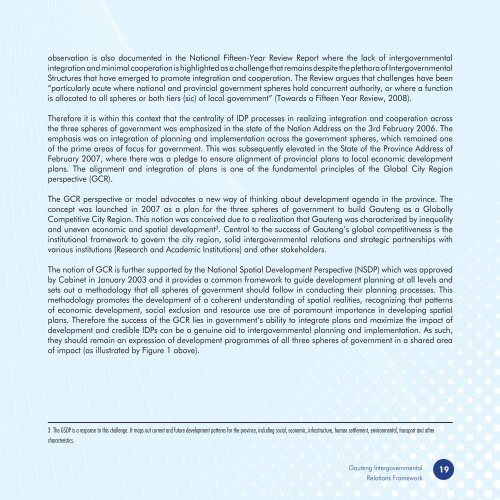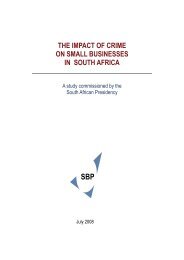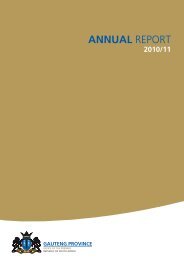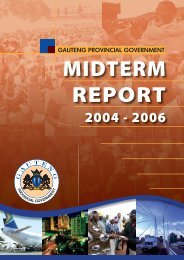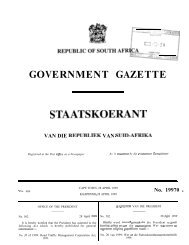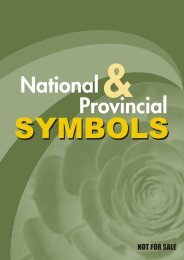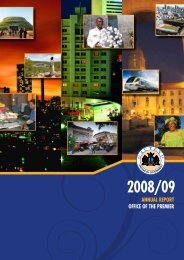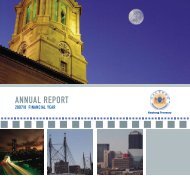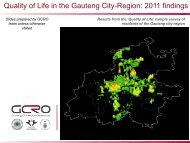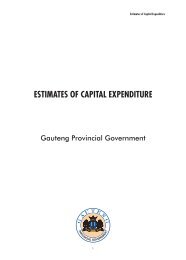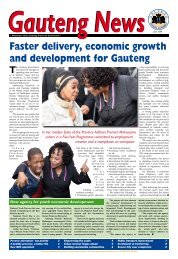IGR report.indd - Gauteng Online
IGR report.indd - Gauteng Online
IGR report.indd - Gauteng Online
Create successful ePaper yourself
Turn your PDF publications into a flip-book with our unique Google optimized e-Paper software.
observation is also documented in the National Fifteen-Year Review Report where the lack of intergovernmentalintegration and minimal cooperation is highlighted as a challenge that remains despite the plethora of IntergovernmentalStructures that have emerged to promote integration and cooperation. The Review argues that challenges have been“particularly acute where national and provincial government spheres hold concurrent authority, or where a functionis allocated to all spheres or both tiers (sic) of local government” (Towards a Fifteen Year Review, 2008).Therefore it is within this context that the centrality of IDP processes in realizing integration and cooperation acrossthe three spheres of government was emphasized in the state of the Nation Address on the 3rd February 2006. Theemphasis was on integration of planning and implementation across the government spheres, which remained oneof the prime areas of focus for government. This was subsequently elevated in the State of the Province Address ofFebruary 2007, where there was a pledge to ensure alignment of provincial plans to local economic developmentplans. The alignment and integration of plans is one of the fundamental principles of the Global City Regionperspective (GCR).The GCR perspective or model advocates a new way of thinking about development agenda in the province. Theconcept was launched in 2007 as a plan for the three spheres of government to build <strong>Gauteng</strong> as a GloballyCompetitive City Region. This notion was conceived due to a realization that <strong>Gauteng</strong> was characterized by inequalityand uneven economic and spatial development 3 . Central to the success of <strong>Gauteng</strong>’s global competitiveness is theinstitutional framework to govern the city region, solid intergovernmental relations and strategic partnerships withvarious institutions (Research and Academic Institutions) and other stakeholders.The notion of GCR is further supported by the National Spatial Development Perspective (NSDP) which was approvedby Cabinet in January 2003 and it provides a common framework to guide development planning at all levels andsets out a methodology that all spheres of government should follow in conducting their planning processes. Thismethodology promotes the development of a coherent understanding of spatial realities, recognizing that patternsof economic development, social exclusion and resource use are of paramount importance in developing spatialplans. Therefore the success of the GCR lies in government’s ability to integrate plans and maximize the impact ofdevelopment and credible IDPs can be a genuine aid to intergovernmental planning and implementation. As such,they should remain an expression of development programmes of all three spheres of government in a shared areaof impact (as illustrated by Figure 1 above).3 The GSDP is a response to this challenge. It maps out current and future development patterns for the province, including social, economic, infrastructure, human settlement, environmental, transport and othercharacteristics.<strong>Gauteng</strong> IntergovernmentalRelations Framework19


